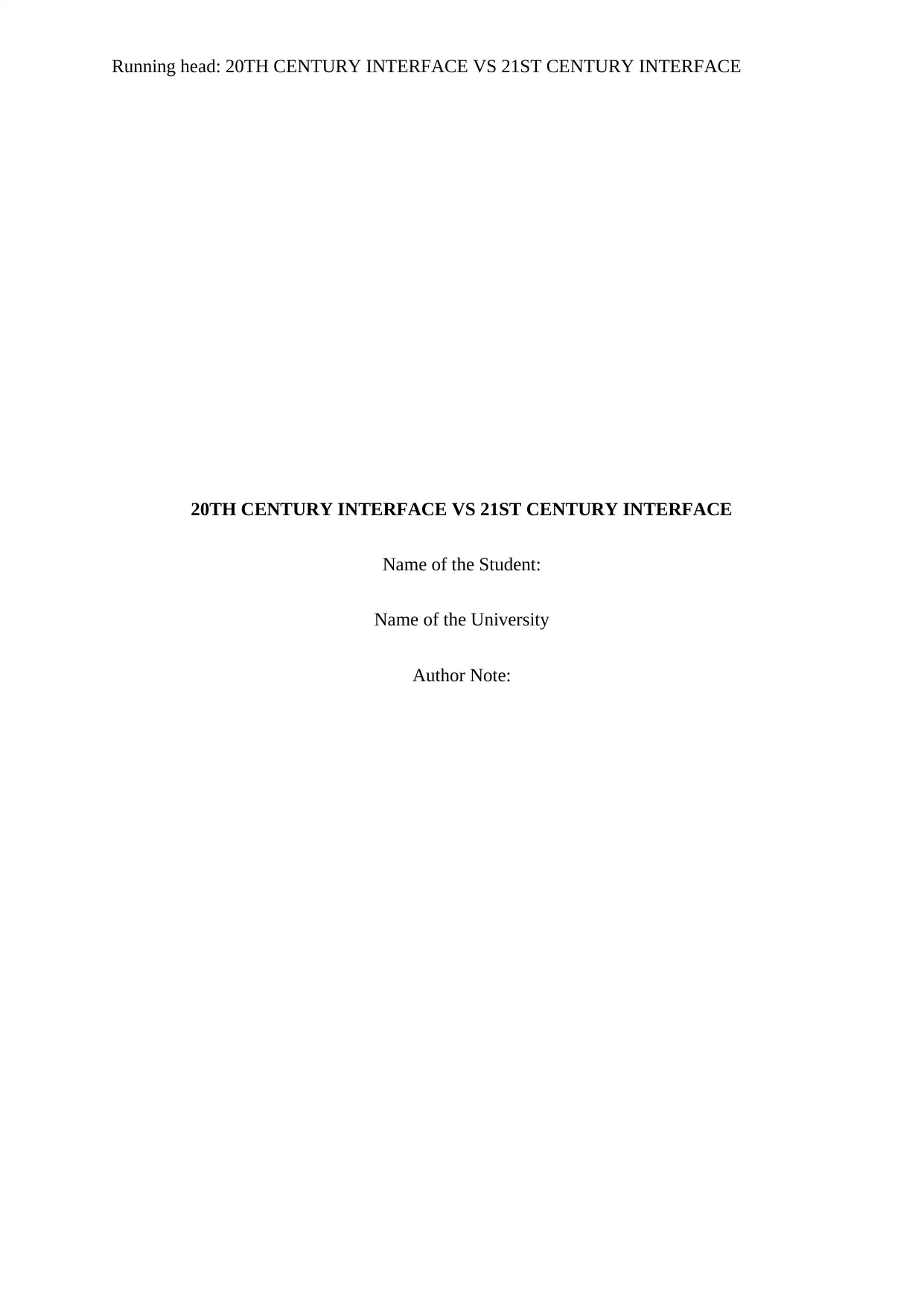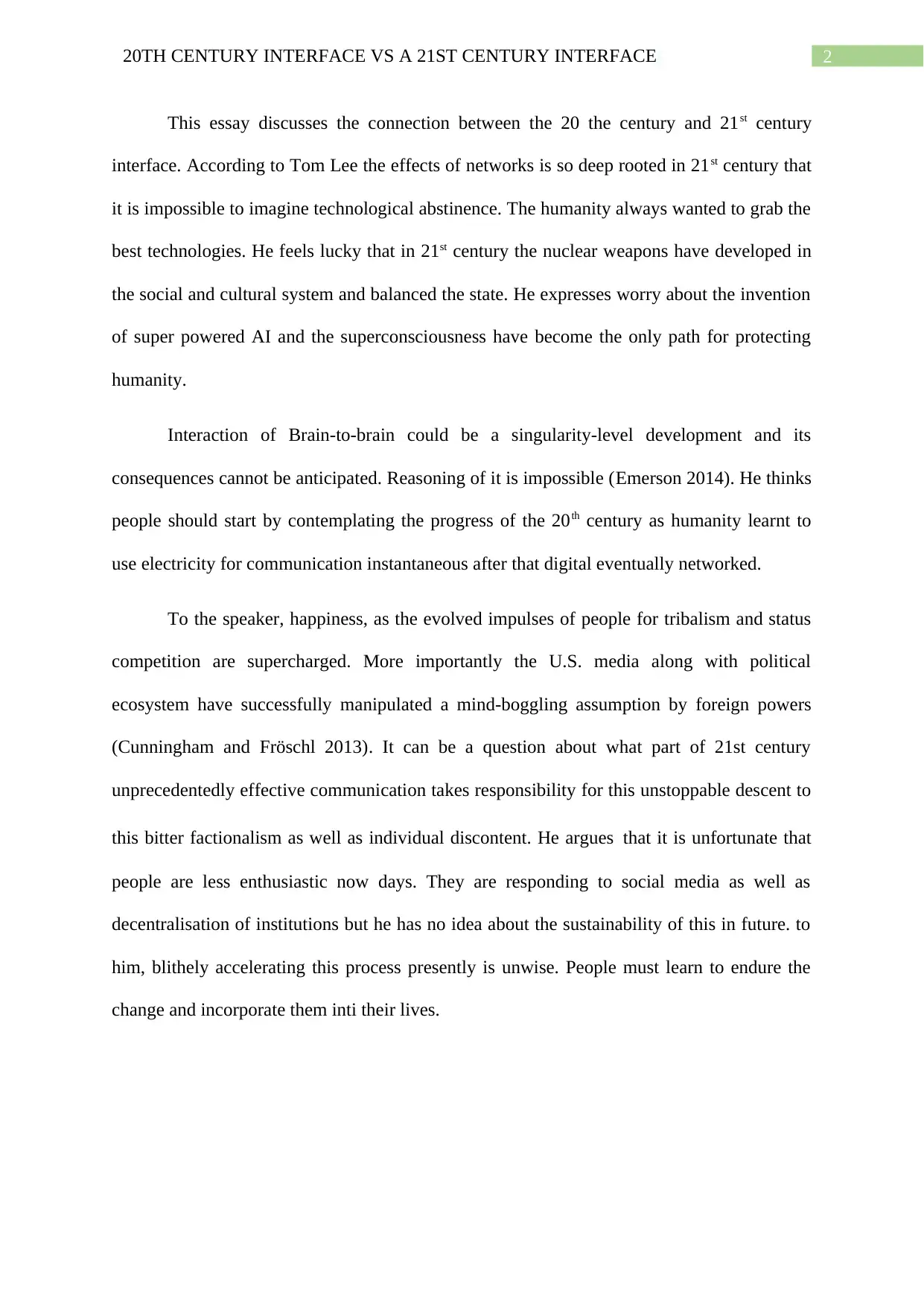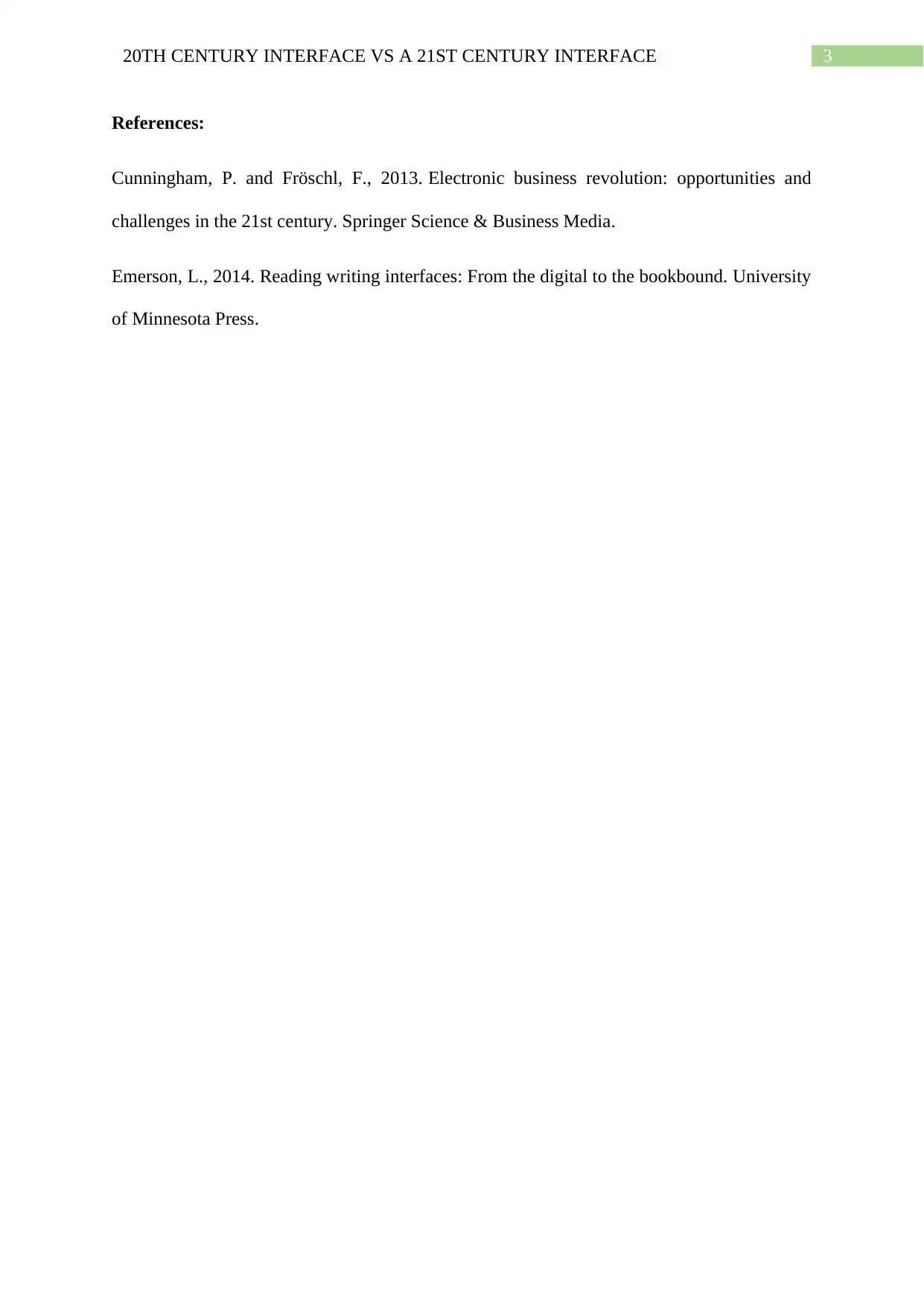20th Century Interface vs. 21st Century Interface: A Comparative Study
VerifiedAdded on 2020/04/21
|3
|386
|132
Essay
AI Summary
This essay delves into the evolution of interfaces from the 20th to the 21st century, examining the impact of technological advancements, particularly in communication and artificial intelligence. The author explores the shift from the 20th-century focus on electricity and early digital interfaces to the networked, AI-driven interfaces of the 21st century. The essay discusses the influence of social media and the decentralization of institutions, pondering their sustainability. It also touches upon the potential risks of advanced AI and the importance of adapting to technological changes. References to relevant literature are also included to support the analysis.
1 out of 3










![[object Object]](/_next/static/media/star-bottom.7253800d.svg)